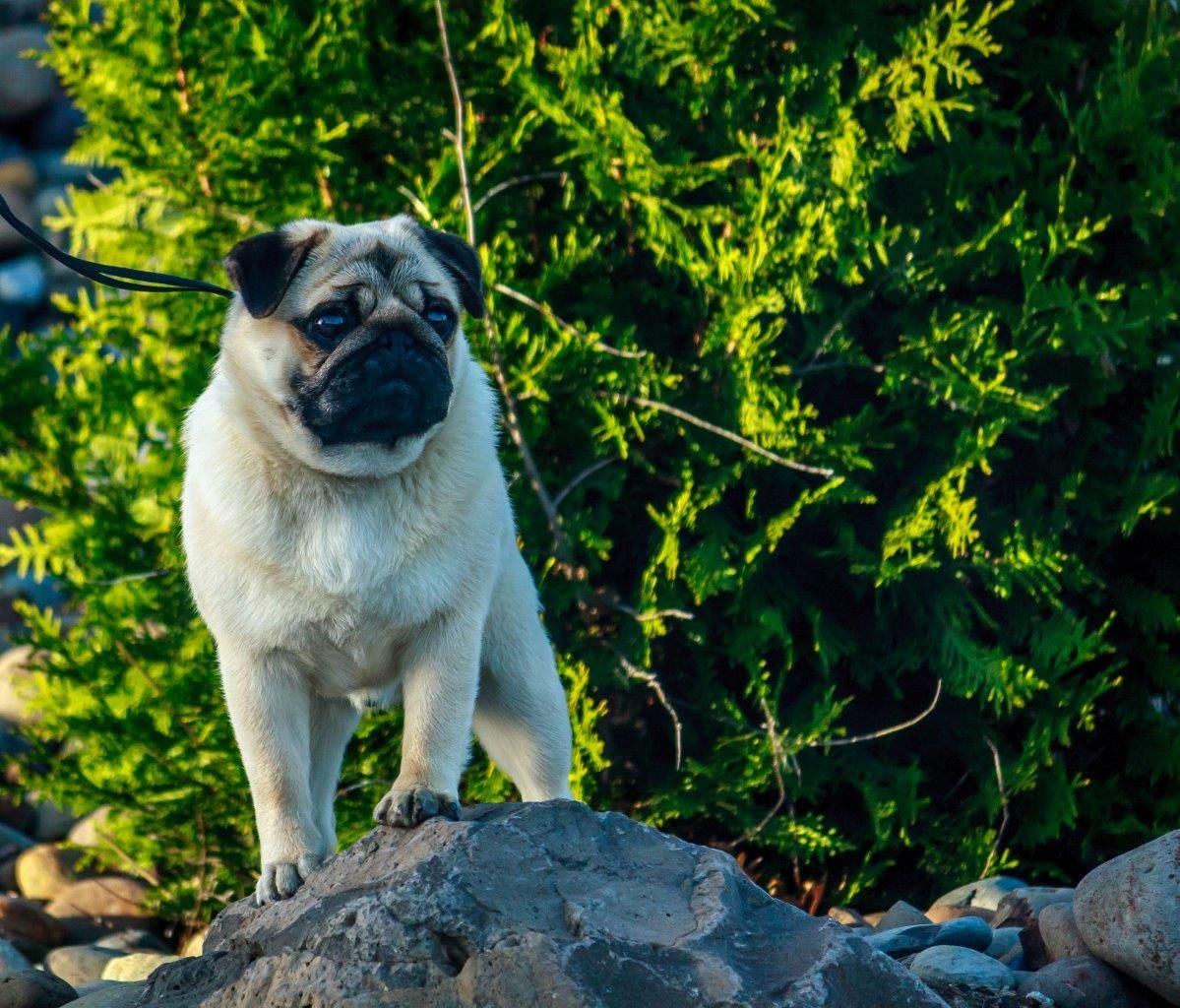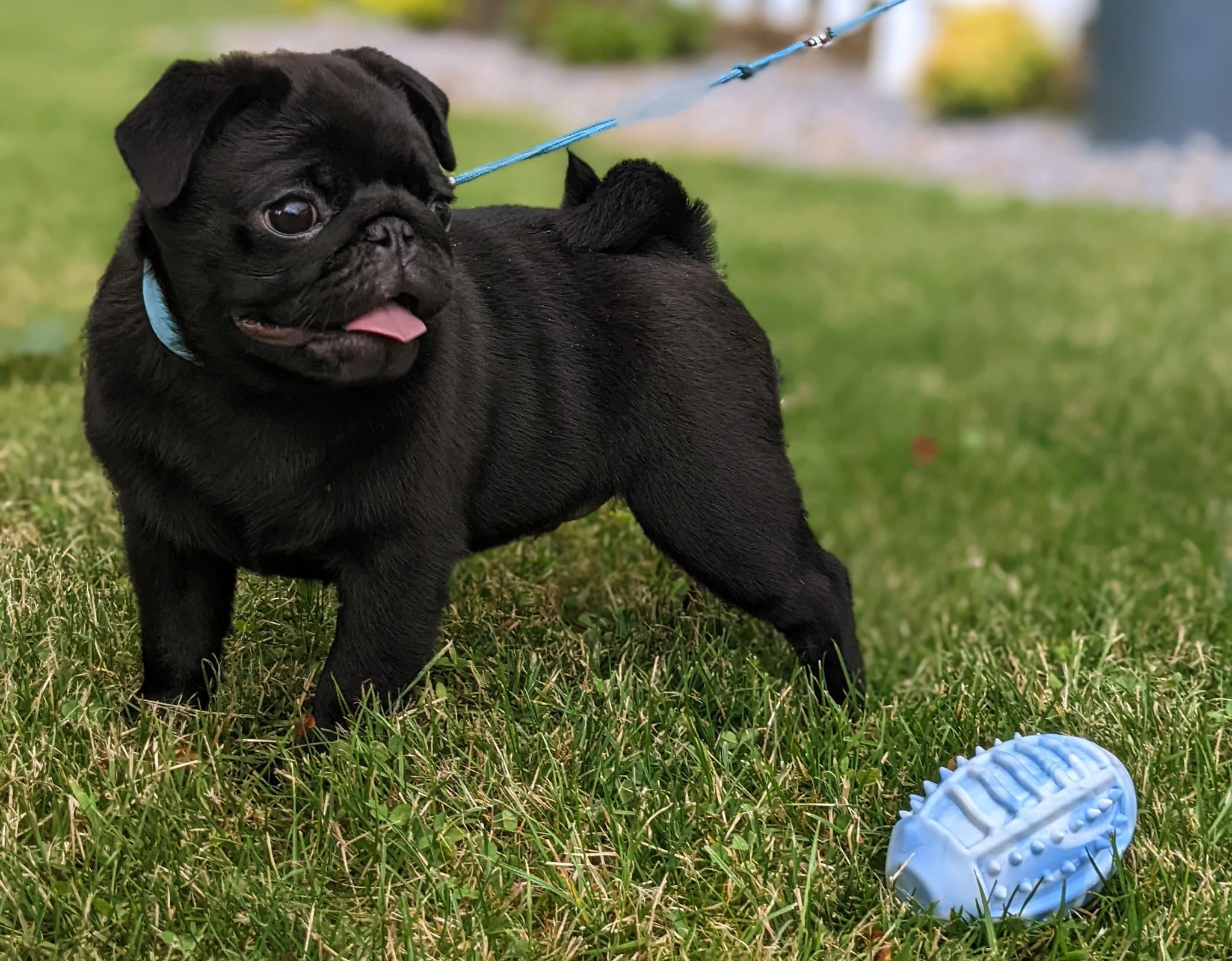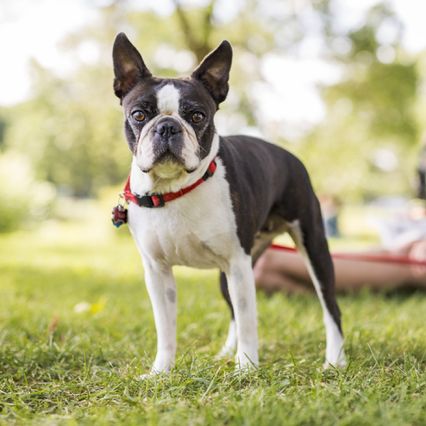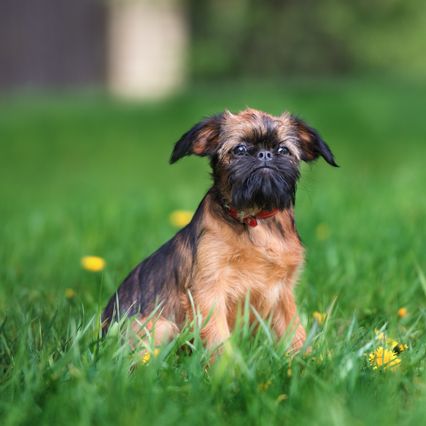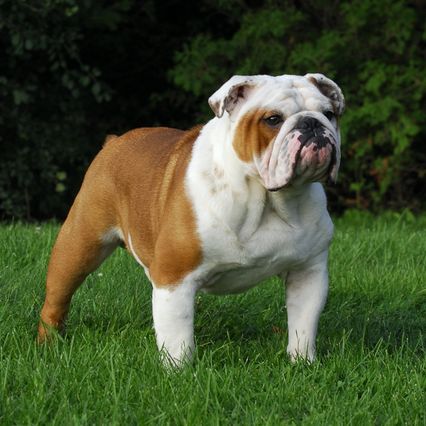
Get to know
Pugs

Veterinarian reviewed
The Pug’s official motto, “Multum in Parvo,” means “a lot in a little” and sums up this little dog with a lot of personality.
Browse available puppies
Connect with reputable breeders to find the dog of your dreams
At a glance
Low Energy
Energy level
2/5
Very Low Maintenance
Grooming
2/5
Small
Size
Confident, inquisitive, playful
Temperament
12-16 years
Lifespan
Average Trainability
Training
3/5
Vocal
Barking
4/5
At a glance
Energy level
Low Energy
Grooming
Very Low Maintenance
Size
Small
Temperament
Confident, inquisitive, playful
Lifespan
12-16 years
Training
Average Trainability
Barking
Vocal
Why people love the breed
Everybody loves a Pug. Some just love them even more than others.
Appearance
Pugs are little powerhouses, the tugboat of the toy breeds.
Grooming
Grooming the coat is very easy, but the wrinkles need some extra attention.
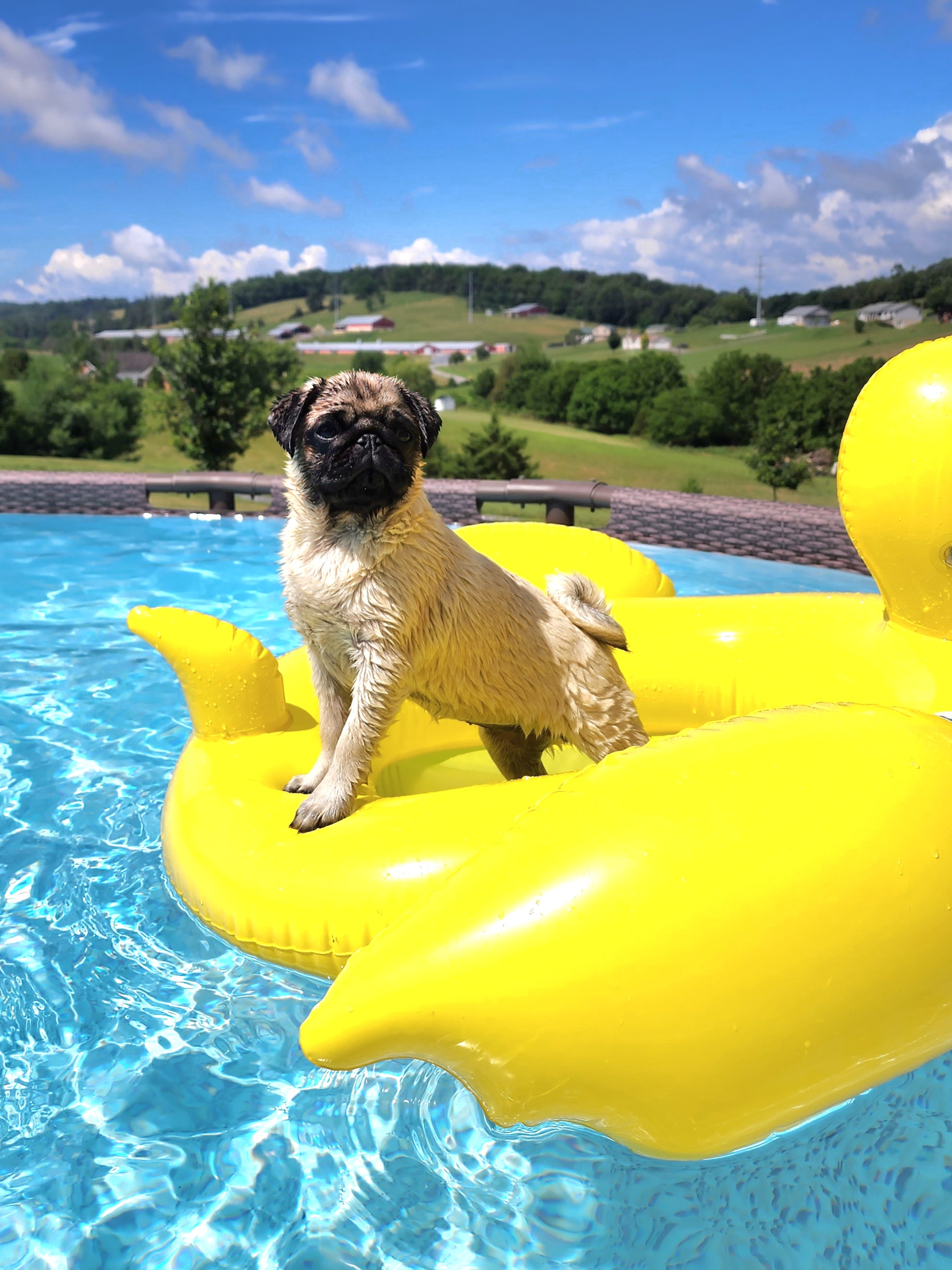
Colebrook Posh Pugs
Breed temperament and characteristics
Multum in parvo–a lot in a little–applies to the Pug's personality even more so than to its body. The Pug packs enough personality for several dogs into one.
Exercise
The energetic Pug needs to run and play every day, but its exercise needs can be met in a smaller space.

Hill Country Pugs
Training
Pugs catch on quickly but can be stubborn.
Diet and nutrition
Pugs like to eat. Your job is to make sure they don’t eat too much.
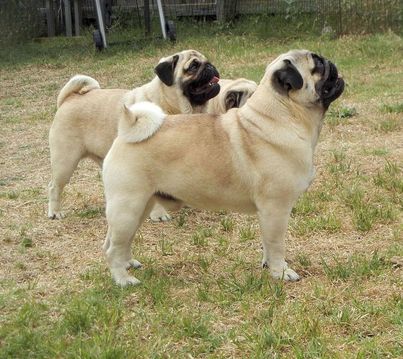
Harmony Pugs
Health issues
Pugs have an unusual physique that can predispose them to some breathing, joint, and eye disorders.
Lifespan: 12 to 16 years.
Brachycephalic obstructive airway syndrome (BOAS)
Occurs in short-faced breeds, including Pugs. Some Pugs have one or more of the components of BOAS, which can cause breathing difficulties. These components are stenotic nares (pinched nostrils), elongated soft palate, and other anatomic defects associated with the respiratory tract. Dogs that have difficulty breathing, that require surgical therapy, or that have a hypoplastic trachea should not be considered for breeding.
Patellar luxation
In which the kneecap slips out of the groove in which it should be nested, causes lameness and arthritic changes. It occurs mostly in small breed dogs. Screening involves an examination and grading of the degree of luxation present registered with OFA.
Necrotizing meningoencephalitis (pug dog encephalitis)
This is a rare but heritable disease in which dogs show neurological signs such as ataxia, blindness, and seizures. A DNA test is available that can identify susceptible dogs.
Other health issues
Pugs are at increased risk for ocular disease, skin issues, hip and elbow dysplasia, and liver shunts.
History
Pugs have an ancient and widespread history. They first made a huge impact in their native China, then in Holland, the rest of Europe, and finally, North America.
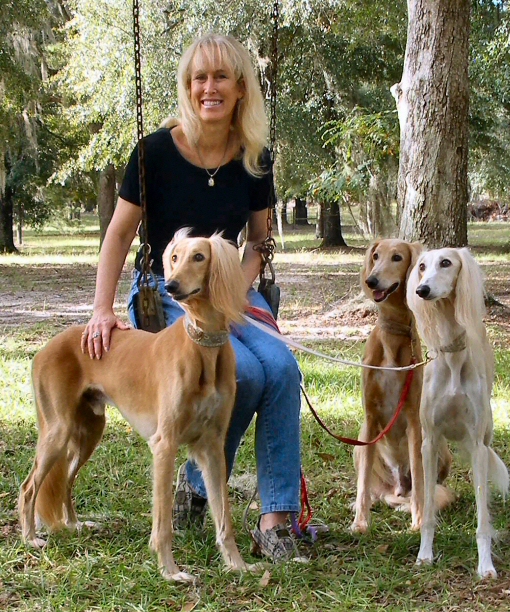
About the author
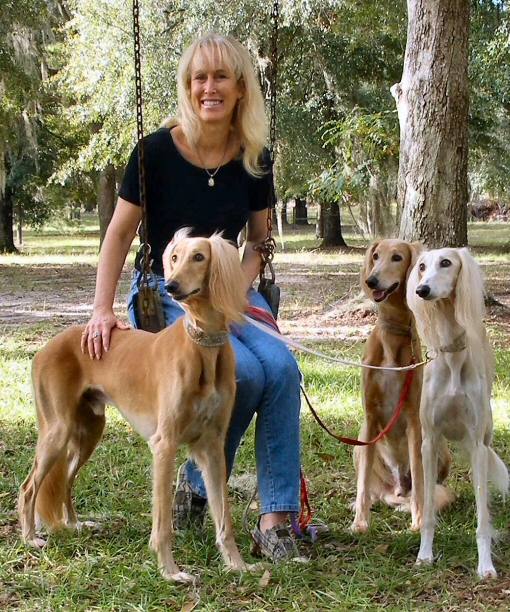
Canine specialist, Caroline Coile, Ph.D., is the author of 34 dog books, including the top-selling Barron's Encyclopedia of Dog Breeds. She’s written thousands of magazine and web articles about dogs. She specializes in canine science, health, breeds and competitions. Caroline has won 20 national dog-writing awards, and was a 2015 Inductee into the Dog Writers Association of America Hall of Fame.
Veterinarian reviewed

Dr. Nate Ritter, DVM is the Veterinary Medical Director at Good Dog. He earned his Bachelor of Science in Biology from Lafayette College and his Doctor of Veterinary Medicine degree from Virginia-Maryland College of Veterinary Medicine. He is a member of the American Veterinary Medical Association, New York State Veterinary Medical Society, the Veterinary Medical Association of New York City, and the Society for Theriogenology. Additionally, he is a USDA-accredited veterinarian.

Breed Scorecard
Characteristics and temperament
Affectionate with family
4
Watchdog level
5
Playfulness
4
Adaptability
4
Social needs
5
Temperament
Confident, inquisitive, playful, stubborn
Intelligence
4
Good with other dogs
3
Good with cats or other pets
3
Friendly with strangers
2
Good as a service dog
2
Good for apartments
5
Barking level
4
Appearance
Height
10-13"
Size
Small
Colors
Silver (non-standard), Black, Fawn, Cream (non-standard), White (non-standard), Brindle (non-standard)
Coat texture
Fine
Coat length
Short, close-lying
Training
Trainability
3
Exercise
Exercise needs
2
Exercise time
One hour daily
Mental exercise needs
3
Favorite activities
Tricks
Grooming
Grooming needs
2
Brushing frequency
Monthly
Needs professional grooming?
No
Drooling level
1
Health issues
Brachycephalic obstructive airway syndrome (BOAS)
Patellar luxation
Necrotizing meningoencephalitis (pug dog encephalitis)
Other health issues
Other
Bred for
Companionship
Country of origin
China
Popularity level
4
FAQs
On Good Dog, you can search for Pug puppies or dogs in rescues and shelters. Adopting a Pug from a shelter or rescue is generally less expensive than buying a puppy from a breeder with ethical practices. Across the United States, there are dedicated rescues that specialize in specific breeds and may even help transport a Pug dog to you from another part of the country. Although it can be more cost-effective, adopting the exact breed you're looking for is typically more difficult than working with a responsible breeder. Learn more about adopting a dog from a shelter or rescue.
The typical price for Pug puppies for sale may vary based on the breeder and individual puppy. On average, the price of Pug puppies from a breeder is $1,750.
Some pugs don’t mind being carried, but they prefer to use their own four legs. Plus, they are fairly heavy and despite their small size it would be tiring for most people to carry one everywhere.
Like any dog, Pugs can be left for reasonable time periods, but do much better with some companionship.
Pugs can be great pets. They are fun, affectionate, gentle, and fairly eager to please. They can be both active and fun-loving as well as calm and snuggly.


















































































































































































.jpg?type=smart&crop=48x48)











































































































































































-.jpg?type=smart&crop=48x48)



















